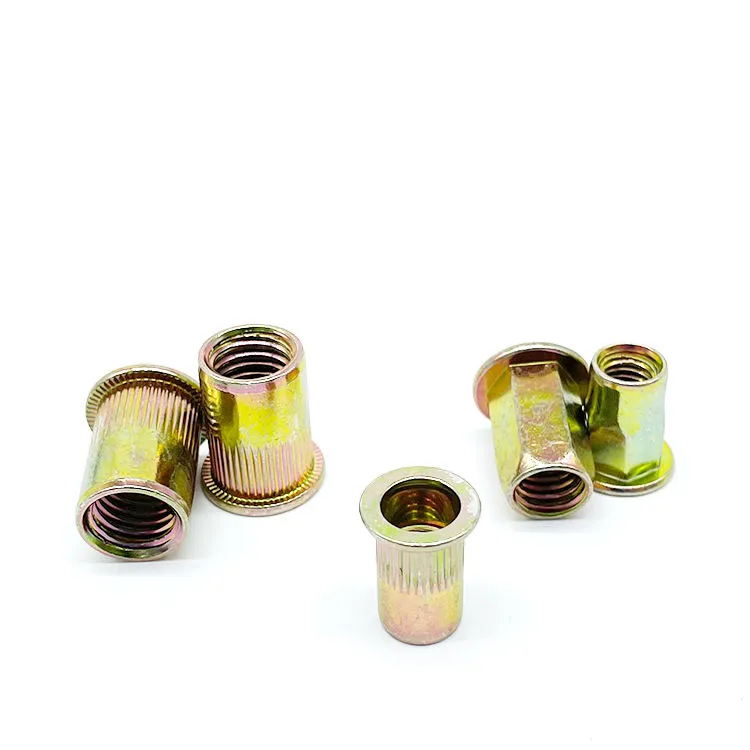

self tapping sheetrock screws
Sep . 22, 2024 02:25 Back to list
self tapping sheetrock screws
Understanding Self-Tapping Sheetrock Screws A Comprehensive Guide
When it comes to drywall installation, choosing the right materials can make a significant impact on the quality and durability of the finished project. One of the essential components in this task is the use of self-tapping sheetrock screws. This article will explore what these screws are, their benefits, and tips on how to use them effectively.
What Are Self-Tapping Sheetrock Screws?
Self-tapping sheetrock screws are specialized fasteners designed specifically for attaching drywall to wooden or metal studs. Unlike standard screws, self-tapping screws feature a sharp point that allows them to cut through materials without the need for a pre-drilled hole. They typically have a coarse thread for wood applications and a finer thread for metal, ensuring a secure hold in various types of framing.
These screws are made from hardened steel and often come with a corrosion-resistant coating, making them suitable for use in different environments, including areas with high humidity or potential exposure to moisture. Their design typically includes a flat head that sits flush against the drywall, reducing the visibility of fasteners in the finished wall.
Benefits of Using Self-Tapping Sheetrock Screws
1. Time Efficiency One of the significant advantages of self-tapping screws is the time saved during installation. Their ability to penetrate materials without pre-drilling eliminates an extra step in the process, allowing for faster setup, particularly in large projects.
2. Secure Holding Power These screws provide superior holding strength due to their unique thread design. The coarse threads bite into the wood or metal studs firmly, reducing the risk of the screw loosening over time, which is crucial for long-term durability.
self tapping sheetrock screws

3. Versatility Self-tapping screws can be used for various applications beyond drywall, including fastening fixtures, cabinets, and other building materials. This versatility makes them a valuable addition to any contractor or DIY enthusiast's toolkit.
4. Ease of Use Most self-tapping screws come with a Phillip’s or square drive, making them easy to drive with a standard drill or screwdriver. This ease of use further contributes to their popularity in both professional and home projects.
Tips for Using Self-Tapping Sheetrock Screws
- Choose the Right Size When selecting screws, make sure to consider the thickness of your drywall and the type of framing material. Generally, 1 1/4-inch screws are recommended for standard 1/2-inch drywall, while 1 5/8-inch screws may be used for thicker boards.
- Spacing Guidelines Follow the suggested spacing guidelines, typically 16 inches apart for most residential applications. Proper spacing ensures the drywall is securely attached and reduces the risk of sagging.
- Use a Drill with Clutch Settings To avoid stripping the screws or damaging the drywall, use a drill with clutch settings that allow you to control the torque applied, ensuring that the screws are driven correctly without over-tightening.
In conclusion, self-tapping sheetrock screws are an invaluable resource in drywall installation. Their efficiency, durability, and ease of use make them a preferred choice for professionals and DIYers alike. By understanding their features and following best practices, users can achieve a flawless drywall installation with lasting results.
Latest news
-
Hot Dip Galvanized Bolts-About LongZe|High Strength, Corrosion Resistance
NewsJul.30,2025
-
High-Strength Hot Dip Galvanized Bolts - Hebei Longze | Corrosion Resistance, Customization
NewsJul.30,2025
-
Hot Dip Galvanized Bolts-Hebei Longze|Corrosion Resistance&High Strength
NewsJul.30,2025
-
High-Strength Hot-Dip Galvanized Bolts-Hebei Longze|Corrosion Resistance&High Strength
NewsJul.30,2025
-
Hot Dip Galvanized Bolts-Hebei Longze|Corrosion Resistance&High Strength
NewsJul.30,2025
-
Hot Dip Galvanized Bolts - Hebei Longze | Corrosion Resistance, High Strength
NewsJul.30,2025

